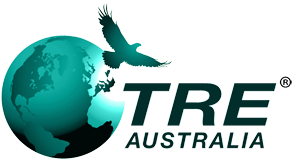Available at the Integrative Women’s Health Institute
or listen here on Spotify or Apple Podcasts or watch on Youtube
From Podcast Host Dr Jessica Drummond:
“When we recognize that a stress and trauma response is about movement in the body, then it makes sense that the recovery response is also about movement.” – Richmond Heath
Trauma is an underlying factor for many chronic illnesses. From digestive issues to autoimmune diseases and problems with the nervous system, in many instances, one of our physiologic systems is stuck due to a traumatic pattern.
The most important thing to know as a practitioner or a patient is that we don’t have to know where the trauma came from to release it. TRE® is a revolutionary technique that utilizes the body’s natural reflexes to allow you to relax your body, calm your mind, and recover from trauma.
Today, I’m joined by Richmond Heath, physiotherapist, TRE® Certification Trainer and National Coordinator of TRE® in Australia. TRE® has had a significant impact on Richmond’s life, and he’s passionate about helping people understand TRE® as a pathway for ongoing growth and development in all areas of our lives.
In today’s episode, Richmond and I discuss the connection between trauma and chronic illness, how trauma manifests physiologically, the role of movement in recovery, how we can use the body’s natural mechanisms for releasing trauma, how to integrate TRE® into your practice, trauma’s impact on health and healing, and more.
Enjoy the episode, and let’s innovate and integrate together!
HIGHLIGHTS:
- The cycle of physiological trauma responses
- Recognizing that trauma is defined by physiological responses
- How the Western world often misunderstands trauma responses
- The connection between unresolved trauma and chronic illness
- How invoking natural shaking mechanisms can aid in trauma recovery
- Reconnecting bodily awareness with emotional experiences
- Understanding that trauma is an active process not a static condition
- Supporting your body through natural shaking and tremoring reflexes
- The disconnect between understanding trauma cognitively and the body’s physiological reactions
- The need for ongoing practice to retrain the body and release trauma effectively
- Using TRE® to empower people and facilitate self-regulation and trauma release
- Training the body to efficiently manage stress responses and promote resilience
- The effectiveness of telehealth and online courses for teaching trauma release
- The necessity of safe environments for emotional release


